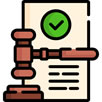« PreviousNext »
3. Legal Framework
Legal Framework in Texas and Utah: Background
Texas
- Senate Bill (SB) 1266 passed in 2007 –amended Chapter 222 of the Transportation Code (amended multiple times)
- First TRZs created in 2010
- As of 2020, there are 16 active TRZs throughout the State:
- 8 Municipal TRZs
- 4 County TRZs
- 4 Port Authority TRZs
Utah
- SB 136 was approved in 2018 –enacting Utah Code Section 11-13-227 (amended in 2019)
- No TRZs yet created as of 2020
- New transit-focused legislation approved in 2021 (Housing and Transit Reinvestment Zone Act)
Texas TRZ Legal Framework: Evolution
| Categories |
2007
(SB 1266)
|
2011
(HB 563)
|
2013
(SB 1110 HB 2300 & SB 971)
|
2017
(SB 1305)
|
| TRZ Type |
|
|
- County Energy TRZ
- Port Authority TRZ
|
- County Energy TRZs repealed
|
| Project Type |
- State Highway (requires pass-through or shadow toll)
|
- Pass-through requirement removed
- State Highway
- Local Roads
- Transit
|
|
|
| TRZ Management |
- Required allocation of 100% of tax increment
|
- Partial allocation of tax increment allowed
- TRZ boundaries can be expanded after creation
|
- Fund multiple projects
- TRZ joint support
|
|
Texas TRZ Legal Framework: Requirements (Texas Transportation Code 222.105 et seq.)
Area Characteristics
- Unproductive and underdeveloped
- The TRZ will foster development, facilitate traffic flow and enhance the local government’s ability to sponsor a project
- A finding of blight is NOT required
Boundaries and Limits
- Contiguous geographic area (project must be located within zone)
- No boundary limits (within the jurisdiction)
- Can be expanded, but not reduced
- May include property already within TIF or other incentive districts –but only for contiguity, not for revenue contribution
Other
- Local government decides the portion of tax increment revenue that must be dedicated to the project –remaining funds may be used for other purposes
Legal Framework in Utah
State of Utah’s TRZ legal framework was enacted in 2018 General Session and amended in 2019 General Session (Utah Code Section 11-13-227).
Utah law requires the agreement of two or more public agencies to the basic elements of the zone, including: transportation infrastructure need and proposed improvement; boundaries and base year; and terms for sharing future sales and/or property tax revenue.
Utah law does not explicitly allow or disallow changes in the footprint, or boundaries, of a TRZ once it has been created and is mute regarding limitations on the size of its boundaries.
The use of TRZ funds is not limited to local, State, or Federal transportation projects.
The Utah law is flexible by allowing the participant public agencies to define the transportation need and improvement within the zone.
« PreviousNext »




